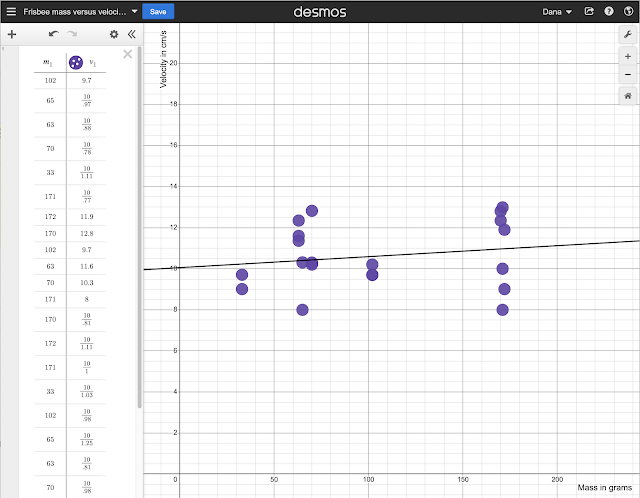Physics of playthings: mass versus velocity for flying disks
With no laboratory scheduled for this week, the class will be exploring the physics of playthings. Failure is an option, and the less I know about the system the better. In Playthings I asked the class if mass will be related to velocity for a flying disk. The consensus appeared to be that more massive disks should be faster - within reason. These are toy disks after all, not discus disks.
Sanjay, Alexander
After data was gathered, I entered data from the three groups into a single table to perform a meta-study. With an r of 0.182 for a linear regression, there was no relationship to speak of.
This was confirmed in a post-hoc analysis.
A slope of zero is within the 95% confidence interval. The p-value of 0.46 is not significant at alpha 0.05. Velocity is related to the speed of the initial throw, not the mass. Failure is always an option. And in this case this is a result that I have considered intentionally designing into the course in the past. Sometimes there is no relationship. If every single laboratory leads to a relationship, the students might be left thinking that everything is always related. To have a system with no relationship is potentially quite valuable.













Comments
Post a Comment